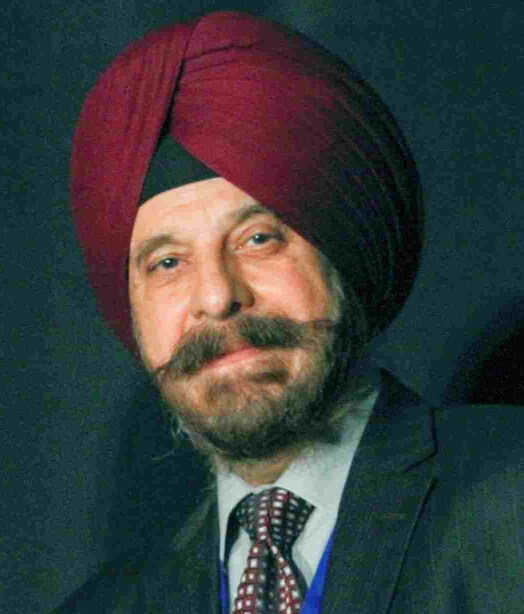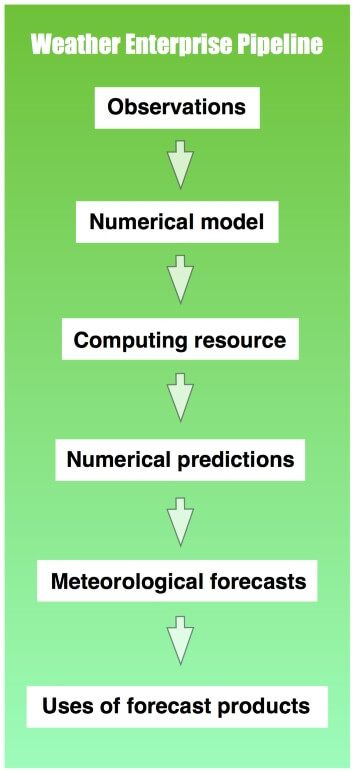
IFMS: Uniting Meteorologists Around the World
– An Interview with Harinder Ahluwalia, IFMS President, by Bulletin Editor Sarah Knight –
What does the IFMS do?
The International Forum of Meteorological Societies (IFMS) represents National Hydro-Met Societies (NHMSocs) and creates collaboration between them in the same way as the World Meteorological Organization (WMO), which is an agency of the United Nations, does for National Hydro-Met Services (NHMS) of various nations.
IFMS generates science and technology collaborations between NHMSocs, allowing them to share resources and build capacity. IFMS also helps create new NHMSocs in those nations where none exists today. We collaborate with WMO and GFDRR-WBG (Global Facility for Disaster Reduction and Recovery of the World Bank Group) in their Global Weather Enterprise initiative.
How did you get involved?

IFMS was created in 2010 and after initial enthusiasm it became a dormant organization. During the World Weather Open Science Conference of August 2014 (WWOSC-2014) held in Montreal, I (as the President of CMOS) and Bill Gail (as the President of the American Meteorological Society – AMS) were asked to organize three sessions on the future of the Weather Enterprise. We formed an Organizing Committee for that event and decided to invite “who is who of the weather world” to complete the following three panels:
- Panel 1: Weather Services Infrastructure: Sustaining what we have and building for tomorrow
- Panel 2: Weather Services – Present Status, Trends, and Innovations
- Panel 3: Enhancing Weather Community Collaboration to Meet Shared Goals for the Weather Enterprise
We created a very interesting Report, which I believe was used by WMO in its 2015 Congress to launch the Global Weather Enterprise (GWE) Initiative. The following were the conclusions derived from the three sessions for strengthening our fight against Global Warming: (1) International Cooperation is mandatory for progress on this important issue, (2) Public, Private and Academic (PPA) Sectors must cooperate for the progress of S&T and provision of services, (3) Capacity building in Least Developed and Developing countries is absolutely necessary and (4) At least basic infrastructure needs to be installed in the least developed and developing countries.
I started thinking that it is easy to have meetings and provide advice but what about acting on that advice to make a difference?
I discussed with AMS to help CMOS to activate and strengthen IFMS, in order to use it as a glue to unite NHMSocs of the world. AMS agreed and fully cooperated to hold a meeting of the IFMS Member Societies in New Orleans in January 2015 concurrently with the AMS Conference. In that meeting, we decided to create a Council, incorporate IFMS, create a Value Proposition and start creating infrastructure for communication, collaboration and capacity building. Many of these activities have been completed and the rest of them are under execution. We have also signed an MOU for cooperation with WMO.
Through organizations like the IFMS and CMOS, is the platform strong enough for public, private and academic enterprises to truly work together?

National Hydro-Met Societies (NHMSocs) are an important building block of the GWE. Many NHMSocs have membership from all sectors – Public, Private and Academic (PPA). Therefore, they present a congenial non-partisan venue for discussing collaboration. A society like CMOS has a Private Sector Committee (PSC) and it represents the point of view of the Private Sector. Although more work is required for true collaboration, at least the building block is there. WMO and its recently created committee GWEF (GWE Forum) are working on steps to assist NHMSs to be a willing partners in GWE. The recommendations will be used by IFMS to assist NHMSocs to promote this vision.
WMO is promoting very strongly the GWE initiative which is supported by GFDRR-WBG and HMEI (Hydro-Met Equipment Industry). There will be many road blocks and challenges to this concept of PPA collaboration in various countries for different reasons but eventually it is expected to succeed because of the fact that the development of S&T and services to handle the future challenges cannot be handled without full cooperation of the three sectors.
Where do you see the field going? In ten years time, what will the technological capability and social understanding look like?
Due to the Global Warming, innovative solutions are required more urgently than ever before. This can only be achieved through collaboration between PPA sectors. Thanks to the efforts of WMO and the GFDRR, GWE is expected to grow substantially over coming years – some estimates state 10 times over the next 10 years. The World Bank Group (WBG) has significantly increased its support to NHMSs in developing countries. Since 2010, the WBG portfolio increased from 25 projects with a total funding $270 million to 67 projects with funding reaching $900 million. Even this amount is not considered sufficient and GWE promoters believe that larger scale and more efficient engagement between the public and private sectors is essential, and that should also include academia. The private sector’s contribution to GWE has grown from $2-4 Billion in 2012, to over $9 Billion in 2017. The technology capability will increase greatly with collaborative PPA participation.
Worldwide losses from Natural Disasters in 2017 were US$330 Billion, with thousands of lives lost. With proper information and planning those loses could have been reduced greatly. Only a fraction of the above amount can provide all the required infrastructure and a great boost to S&T. Instead of being reactive to weather disasters, we need to be proactive. It appears that we have not been able to make a strong enough case to our Governments to support more investment in this field to safeguard humanity against the natural disasters. As the President of the IFMS, I am urging WMO to prepare a strong Value Proposition for convincing National Governments to invest more in our field and also prepare material for educating public about the value of investment in our field. The politicians listen to public pressure.
Having also served as CMOS President in 2014-2015, you also have an expert eye view of how our Society operates. Given your experience with the IFMS and your knowledge of other meteorological societies around the world, how does CMOS compare?
The financial situation of AMS is strong and US companies are very generous in making financial contribution. AMS is the strongest Met Society which has almost everything a society can hope for. They also have an International Affairs Committee which plans, executes and keeps track of their international activities. In contract, in Canada it is quite hard to get donations from large corporations which use meteorology as a part of their daily business.
CMOS’ flagship activity is its Conference which attracts reasonably large number of participants and speakers. If the Society could convince larger users to make financial contributions more would be possible, including having a full time Executive Director and possibly an assistant, existing Programs strengthened, a strong mentoring program, the certification program restarted, and greater participation in International activities.
What areas is CMOS missing that we could be putting more attention to, given the restrictions of a non-profit society?
During my term as the President, I tried to achieve a lot of things such as Webinars, Mentoring, international cooperation, involving large users of hydro-meteorology and oceanography, etc. One year was too short a period to make big changes. These ideas should be given high priority if CMOS is to become a powerful organization. Its number one priority should be convincing large users to provide financial sponsorship to CMOS. Financing is the most common problem for almost all such societies. The IFMS is forming a Committee to develop Value Proposition for convincing donors to contribute to their local Met Societies as well as to IFMS to strengthen all Met Societies. This should be helpful for CMOS too.
Does the Canadian government support CMOS to the same level that other Met Societies around the world are?
The Canadian Government’s support for CMOS is in line with that of other Governments. But I strongly believe that the Meteorological Societies in general have not been able to make their governments understand the value of such societies which are staffed by volunteers, many of them very dedicated to the cause. Therefore, we have to make a stronger case for bigger support by local government. We also need to educate public at large about the Global Warming and the disasters caused by it as well as the role a benevolent society like CMOS can play. Considering the value a society like CMOS can provide for the nation in this important field, bigger financial and moral support from National and State Governments is logical. We need to work harder to achieve this.
How can Canadian meteorologists get involved with the IFMS?
At this time IFMS is in a formative stage and we ask, like President Kennedy did, “Ask not what IFMS can do for you, ask what you can do for IFMS” and then see what IFMS can do for you. Major goals of IFMS are to create collaborations, between Societies and their members, provide strong means of communications through Website, Newsletter and Social Media, and assist WMO and WBG in creating Capacity, leverage each other’s strengths. We are looking for Volunteers to run many of our programs and are requesting all societies to help. What we do will be useful for all societies.
On the other hand, CMOS members should start using the facilities provided by IFMS which include collaboration, infrastructure, and communications like the IFMS Newsletter and the website to spread their messages.
Global Weather Enterprise, Harinder Ahluwalia, Hydro-Met, IFMS, International Forum of Meteorological Societies
